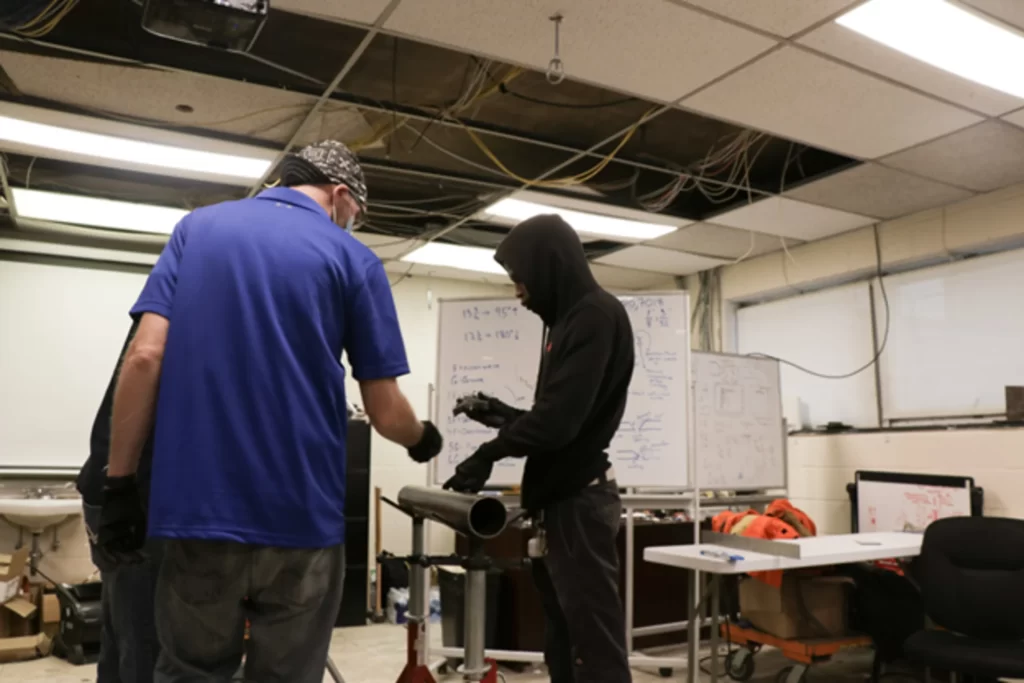Plumbing is the installation of piping, appliances, venting systems, and public and private systems. A plumbing system comprises three components: a reliable source of potable water, a secure drainage system, and enough fixtures and equipment.
A plumber’s top priority is installing a reliable water supply and drainage system. They also ensure that the system removes waste from the house. Plumbers also provide no gas or waste leaks. There are plumbing courses that help in developing trade skills.
You can find different types of plumbing in houses and buildings. Different plumbing designs make water supply and waste management more effortless. Plumbers ensure that the plumbing system in the buildings is sound. For example, water supply plumbing provides water in our kitchens and bathrooms. Drainage plumbing helps in removing waste from buildings. Roof plumbing looks at the deaccumulation of water from the roofs. Following are some of the most common plumbing types:
A plumber’s main task is installing water connections to our kitchens and bathrooms. In addition, they establish hot and cold water connections in our homes. Some of the hot water systems installed by plumbers are:

Sanitary plumbing refers to the drainage of wastewater. Sanitary plumbing also includes:
Sanitary plumbing does not include the installation of dishwashers and washing machines. However, specific plumbing programs can help you in becoming sanitary plumbing.
Gas Fitting Plumbing helps in the transportation of natural gas and LPG. They transport gas from a gas container’s control valve or connection point to a gas appliance. However, gasfitting and plumbing are two different trades. Therefore, they require different levels of education and practical experience. A plumber can obtain a gasfitter and plumbing license by getting a Cert lll in Plumbing.
Plumbing also involves securely eliminating used water from a system. A drainage plumbing system transports used water from fixtures to the main sewage line or septic tank. And in doing so, it must avoid sewage leaks or contaminating freshwater. A building’s ability to function correctly depends on its drainage plumbing. Sanitary sewer systems in buildings are connected to the general sewage system. All liquid waste from sinks, toilets, and other drains in a building is gathered by the sanitary sewer system and transported to the public sewer system for treatment.

The main goal of roof plumbing is to direct and remove rainwater from the roof. Each roof plumbing fittings completes a crucial task by preventing outside water from entering your property. In addition, roof plumbing protects the house’s structural integrity by preventing water from collecting on the roof. A roof plumber has a distinct set of skills from a regular plumber. These individuals typically need a particular set of specialized talents to perform as roof plumbers. A plumbing license helps you in becoming a skilled roof plumber.
A plumbing vent controls the air pressure in the house plumbing system. Plumbing vents are similar to drain pipes in that they eliminate gas and odor from the houses. This also enables the system to get fresh air, enhancing water flow and pipe drainage.
A plumbing system is designed to remove waste and water from a residence. Your drainage pipes send the garbage to the septic or city sewer systems. The vent pipes ensure fresh air gets into the drainage pipes for water to drain.
You can become a certified plumber by completing plumbing certification courses at PTTI. Plumbing courses at PTTI sharpen your skills as a plumber and make a career of it.
Read More: